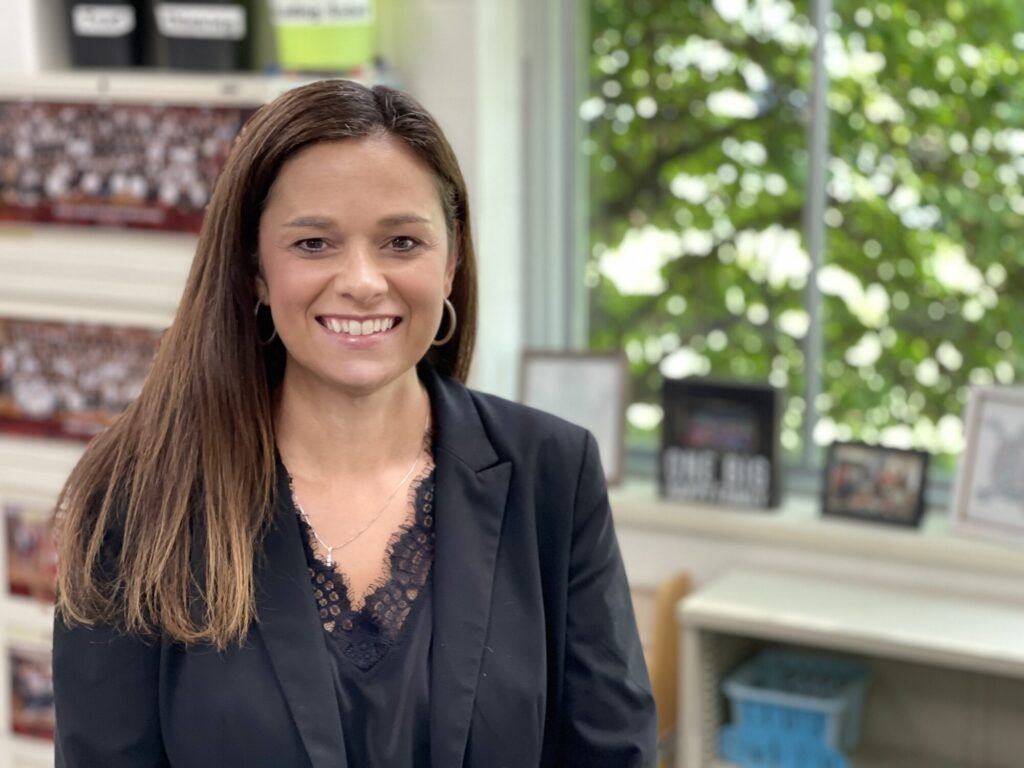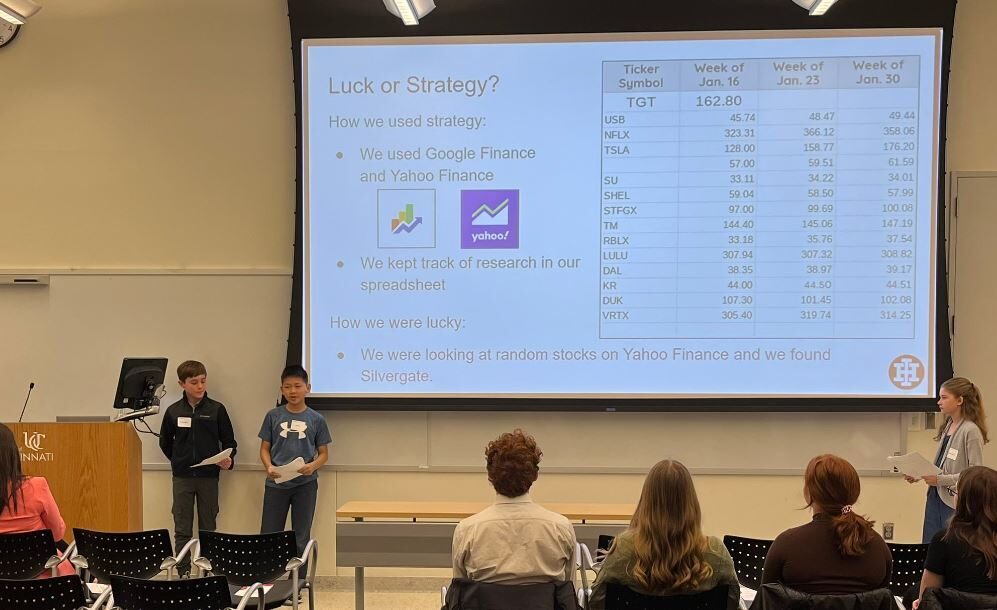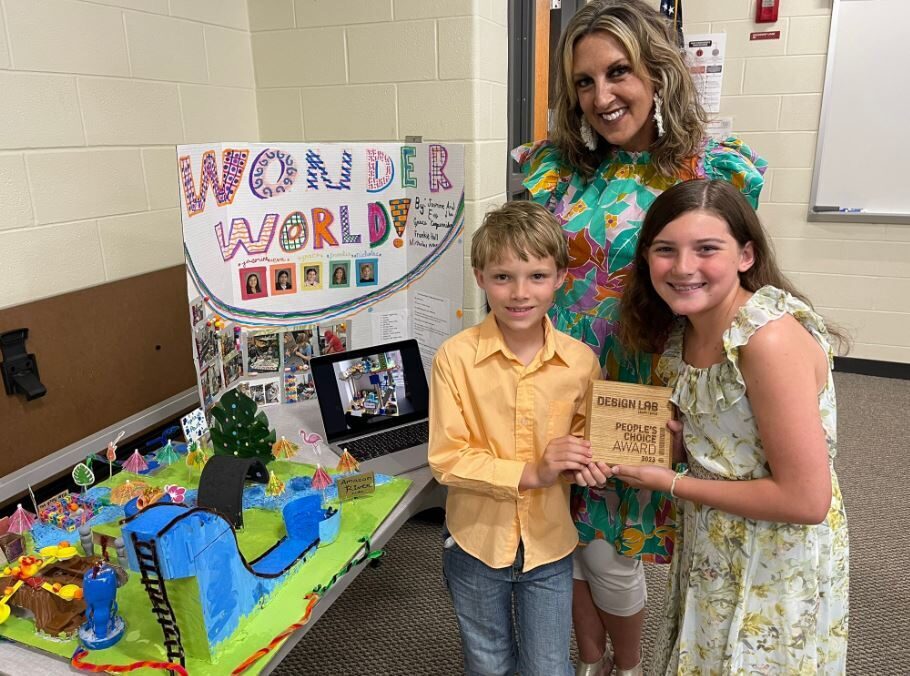In May, the Ohio STEM Committee approved six schools in the state for five years of STEM school designation.
Two schools in the Cincinnati area – Indian Hill Primary and Indian Hill Elementary – received the statewide designation for the first time. Whitney Buell, principal of Indian Hill Elementary School, agreed to answer a few questions about her school and how it sought and achieved designation
This conversation is our final interview with the 2023 class of newly-designated Ohio STEM schools. Catch up with previous interviews here: How Indian Hill Primary School embraces innovative learning and ‘In Sync with Nature’: Hawkins STEMM Academy’s Approach:
Q: Tell us about your school, its students, its mission and the community that it serves.
A: Indian Hill Elementary School (IHES) is a small, public, suburban school just outside Cincinnati. We serve all third- through fifth-grade students in the district and have just over 500 children in our building.
The community is highly supportive of the schools in all areas. Our community wants and expects the best education for their children, therefore IHES aims to do school differently in many ways. One way is by empowering student voice and choice throughout the curriculum using our Habits of Mind (the 5 C’s), design thinking and project-based learning (PBL).

Our District #IHPromise prioritizes our students by empowering their voice in a personalized, collaborative and inclusive learning environment. An integrated STEM curriculum is part of that promise to students and families.
Q: Why did you seek the statewide STEM School Designation? What was involved in seeking the designation, and, as principal, what did you learn from the process?
A: Seeking STEM designation was the next step in a years-long endeavor to bring the best in STEM education to children across the district.
Prior to formally applying, IHES incorporated “STEM for All” by creating our iLab and GO Time learning opportunities for students more than six years ago. ILab is a unified arts class where students are encouraged to use the 5 C’s (collaboration, communication, creativity, critical thinking and citizenship) to solve problems, learn through failure and develop ideas.
Every student also participates in GO Time in which they can select from a multitude of classes that range from bridge building to coding to stem stories and challenges.
Since implementing these initial opportunities, we found it important to incorporate STEM in all we do in each of our classrooms. This prepares students for an ever-changing world.
A team was created to not only include elementary school staff but educators from other buildings, including our board office, and community members. Our collaboration has allowed us to come together and begin the process of analyzing what we already do well and how to incorporate design thinking, PBL and STEM into all content areas.
To begin, we met regularly with our internal team to observe classrooms and collect artifacts to showcase the IHES STEM student experience, develop next steps in learning and enhance existing and new partnerships. We then took this information to our external stakeholders to gather feedback for further implementation.
All along, the staff shared how they incorporate STEM practices in their classrooms, evaluate their practices with colleagues and learn how to use the design thinking process across all content areas.
The process has allowed us to reflect on our practices and involve student voice in every aspect of learning. It has allowed for further collaboration with teachers across content areas and grade levels, leading to a real world understanding for students.
As a principal, I learned that STEM designation is about showcasing and celebrating what is going on in each classroom every day. This designation was a team effort, from our teachers to our support staff to our external stakeholders and partners. Each and every educator participated in walkthroughs to observe STEM practices and coaching cycles to deepen their understanding.
Learn about STEM school designation
Ohio law provides a specific pathway for schools to seek and receive designation as a STEM or STEAM (Science, Technology, Engineering, Art, and Math) school. Designation recognizes a school as an effective place for STEM or STEAM learning.

Q: How did seeking the state STEM School Designation with another school in your district (Indian Hill Primary School) impact the effort? In general, do you collaborate on STEM-related activities/curriculum/professional development, etc., with the primary school?
A: All primary school children transition to the elementary school in third grade so we have a history of strong communication and collaboration. Students learn and practice similar habits of mind in both schools as well as the same design thinking process. This helps students and teachers in both schools use common terminology and set common expectations for application.
When beginning the designation process, both schools had at least one person on the other school’s STEM team, advisory group and curriculum team. At the elementary school, we have also included members from our middle school and high school teams so that the STEM experiences continue throughout students’ time at IH.
Our district hosted its first District STEM Night. All four buildings had representation in planning and hosting the event. Of course, that makes the collaboration and completion of the application easier, but, more important, it creates a connected and cohesive student and community experience. We collaborate on all things STEM.
Q: What do you consider your school’s “superpower” when it comes to STEM education, and what could other schools learn from your successes?
A: Our superpower is collaboration and creating engaging experiences for students that allow for choice and voice. We have built a schedule that gives teachers time to work collaboratively to develop units of study across content areas.
Our instructional coach conducts walkthroughs with teachers and assists in the planning of cross-curricular real-world experiences. Students have a choice in path, pace and place in learning throughout their day. Our students share how much they enjoy learning and can apply their knowledge.
Q: What are the challenges and rewards in implementing a STEM-based curriculum in a school for young learners?
A: The rewards are observing the students doing the work by using the 5 C’s and design thinking process in everything that they do. It allows the teacher to be a facilitator, and the student is actively engaged in their learning. Students are happy and excited when they walk into the building because they know that what they are doing relates to the real world.
The challenge in a third- through fifth-grade building is continuing to think about state and national assessments. While we incorporate all of the standards within our PBL units, it was a mindset shift for the traditional classroom teacher, because it is different from how most educators themselves learned. Authentic assessment is also an area in which we improve constantly.
Q: What kind of outside supports – community leaders, local businesses, government agencies, etc. – have been the most valuable to your students and why?
A: We are so fortunate to have an involved local community. Parents and guardians love to assist, whether it be through serving on our STEM Advisory Team, presenting to a grade level on a certain topic or volunteering their time in the building. We have many parents with STEM backgrounds, and this allows us to discuss current trends in the STEM sector and how to prepare our students for future careers.
Our business partners have also been instrumental in the development of our PBL units. We were fortunate to work with MSA on the OSLN Design Challenge when designing our playground that will be unveiled this school year. Every student participated in this challenge, and their ideas were taken to our team of contractors.
We have strong partnerships with Northern Kentucky University and the University of Cincinnati. Through these partnerships, we can offer all of our fifth-grade students the opportunity to learn about the stock market, while our third-graders can participate in different STEM challenges through focusing on their standards. Our staff have also presented and been honored by these universities. It is truly a reciprocal partnership.
Q: Tell us about your district’s IH Promise and Strategic Plan and how they relate to your school.
A: The #IHPromise prioritizes our students by empowering their voice in a personalized, collaborative and inclusive learning environment.
STEM for All is the truest model of the #IHPromise. Students lead the learning in PBL. The 5C’s are the tenets of our lesson design, and we can meet the needs of all students by ensuring room for a personalized classroom experience.
With our Strategic Plan focusing on learners as doers, learners as individuals and learners as the whole child, STEM is considered a component of learners as doers. However, through the lesson design framework of PBL, we are using STEM to develop student agency, create culminating experiences and expand career pathways and mentorship opportunities.
STEM is an umbrella for a positive school experience rooted in strong student-centered practices that will prepare the next generation of children for jobs that don’t yet exist.
Q: Problem-based learning labs for teachers played a key role at your school in making the transition to a STEM-based school model. Could you tell us about the labs and why they met your school’s needs?
A: PBL is a lesson design framework that enhances STEM when educators use the Gold Standard to create learning experiences. Indian Hill Schools have worked directly with PBL Works to learn about the Gold Standard and use PBL as a vehicle for interdisciplinary learning. You can read more about it here.
Lab classrooms are job-embedded professional learning for our staff. All staff had time set aside this past school year to observe a teacher who was working on a PBL in his/her classroom. Beyond just being observed, those teachers then stepped out of their classroom and took time to talk about what was observed, how it was planned, next steps and even changes that may have been made on the spot.
Teachers could then collaborate with their peers and our instructional coach to develop lessons based upon their grade level standards. Because of this, 100% of our teachers developed and implemented a PBL unit during the 2022-23 school year. We chose to focus on PBL because it directly enhances our work as a STEM school.
We will continue this practice in the coming school year, with three new lab teachers. The benefits of lab-site classrooms can be realized only because we have an amazingly supportive leadership team that sees the value in investing in the development of teachers. This investment allows our students to be involved in creative and collaborative learning experiences.
Q: What advice would you give other educators interested in implementing a STEM-based curriculum or in seeking the state’s STEM School Designation?
A: A key component in initiating STEM learning is helping all stakeholders understand that STEM is not limited to the acronym of science, technology, engineering and math. It is the development of a skillset that allows for hands-on, interdisciplinary learning, connected to real world application and presentation.
Q: Is there anything else you would like to tell us about your school or the STEM School Designation?
A: You would be surprised by how much you might be doing already that is included in the STEM rubric. STEM is a journey. You will never stop learning and growing. We are happy to have anyone visit and ask questions!
Please reach out if you are an elementary school and considering STEM designation. We, at IHES, would be happy to help! @IHElementary (Twitter and Instagram).
